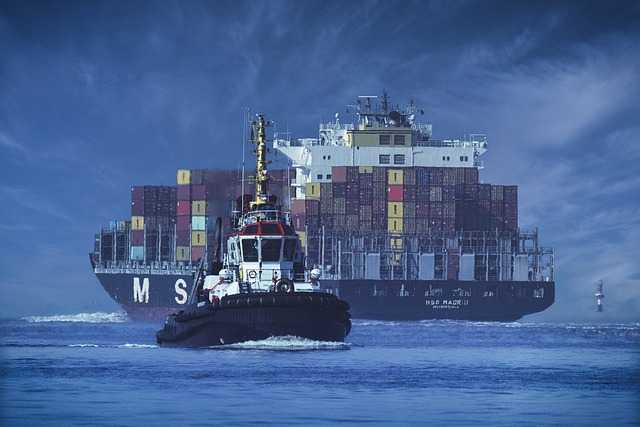At one of my workshops, I recently spoke to a participant about a solar energy-based company he was considering starting. I shared that if he was going to move forward with his business idea, he should really consider potential supply chain issues in his planning. I suggested that many solar-related parts were manufactured in China and that China was experiencing some very serious internal and external issues that could affect his company’s supply chain in the future. The discussion got me thinking about a problem I often see when mentoring clients.
As a mentor, I speak to many entrepreneurs about their business plans. However, many clients fail to consider “what if” scenarios if things do not go exactly as initially planned.
“Everyone has a plan until they get punched in the face.”
Mike Tyson
Related Post: How to Improve Your Odds of Success by Conducting a PESTEL Analysis
Today, supply chain issues are one of the primary causes of business disruption. Reports about broken supply chains dominate many newsfeeds, yet too few entrepreneurs consider them during their planning.
A supply chain refers to the network of organizations, individuals, resources, activities, and technologies involved in creating and distributing goods or services from the point of origin to the end consumer. It encompasses all stages of the product lifecycle, from raw material sourcing and manufacturing to transportation, distribution, and, ultimately, delivery to the end customer.
In the context of your small business, your supply chain is the backbone of your operations, encompassing every step in bringing a product or service to market. This includes sourcing raw materials or components, manufacturing or assembling the product, managing inventory, transportation logistics, warehousing, distribution, and customer service. Often, you are just one link in the chain, and all it takes is for one single link to slow down or break to profoundly affect your business. Remember how a shortage of a single chip from Taiwan hobbled the auto industry in 2021?
Effective supply chain management involves optimizing each step of the process to ensure efficiency, cost-effectiveness, quality control, and timely delivery. It requires collaboration and coordination among various stakeholders, including suppliers, manufacturers, distributors, retailers, and customers, to meet demand while minimizing costs and maximizing value.
A well-managed supply chain is essential for a business to remain competitive, as it directly impacts product availability, customer satisfaction, and profitability.
Prior to the industrial revolutions in Europe and the US, most supply chains were local and restricted to specific regions. The invention of the internal combustion engine and cars in the late 19th century led to the development of trucks, which enabled faster transport of goods by road, extending supply chains beyond local regions. Pallets started to be used in warehouses in 1925, which made handling goods even more efficient. Logistics became very important during World War II, as military organizations needed efficient supply chains at home and in Europe. International trade exploded in the wake of World War II, fueled by the rise of global supply chains as the world was rebuilding from the war and by the US Freedom of Navigation program, which guaranteed open access to all maritime trade routes. Supply chains took another leap forward in the 1950s when Malcom McLean invented containerized shipping, facilitating the proliferation of global trade agreements.
The wake-up call came in the winter of 2020 with the COVID-19 pandemic, which shut down global trade. Many businesses across the country saw their supply chains dry up overnight.
The China Problem
Since the COVID-19 pandemic, many industries have reevaluated their supply chains. One area that has received much scrutiny is the supply chains that involve China.
During the 1970s and 1980s, China leveraged its massive workforce and favorable geographical location and soon emerged as the linchpin of global supply chains. This status, underpinned by its unrivaled ability to produce goods on a large scale and at low cost, was unmatched by any other nation.
The 2010s saw the first signs of trouble in China’s manufacturing dominance. A confluence of internal and external factors started to erode China’s supremacy in the global manufacturing landscape and affected many industries in the US that relied on products or components from China. Internally, rising labor costs and environmental concerns posed significant headwinds to its manufacturing supremacy. As China’s economy continued to mature, leading to an improvement in the population’s standard of living, the once abundant reservoir of cheap labor faded into history as wages soared. Additionally, the environmental toll of rapid industrialization became increasingly unsustainable, necessitating stricter regulations and higher production costs.
Externally, shifting geopolitical dynamics and escalating trade disputes further strained China’s position as the undisputed leader of global supply chains. The rise of alternative manufacturing destinations, such as Vietnam, Bangladesh, and India, offered competitive advantages in terms of labor costs and regulatory environments. This heightened competition continued to chip away at China’s manufacturing dominance, forcing many businesses that rely on components manufactured or assembled in China to reevaluate their economic models.
Related Article: Foxconn facility deserted as Apple shifts work out of China
As stated earlier, the COVID-19 pandemic served as a wake-up call for many industries, exposing the vulnerabilities inherent in a global supply chain overly reliant on a single country like China. As factories closed and supply routes were disrupted, the fragility of the global supply chain became painfully evident. Businesses and governments today are compelled to reassess their supply chain strategies, prioritizing resilience and redundancy over cost efficiency.
Making matters worse, China is expected to lose around 70 million workers as a large part of its rapidly aging workforce retires, with few replacements, exacerbated by the one-child policy implemented by China between 1980 and 2015. The official retirement age is currently 60 for men, while the retirement age for women in managerial positions is 55 and 50 for blue-collar workers.
Like the student in my workshop, US businesses that are part of the green revolution will be hardest hit since China dominates the global solar photovoltaic supply chains. As of 2023, China’s share in all the manufacturing stages of solar panels (such as polysilicon, ingots, wafers, cells, and modules) exceeds 80%.
It is not much better for EV batteries. China also holds a substantial share of the global market for EV batteries. Since 2021, China has produced about 79% of all EV lithium-ion batteries that entered the global market. Other sources suggest that over 80% of the world’s lithium-ion batteries are made in China.
Global Supply Chain Issues
However, green technologies, including solar and batteries, will not be the only industries affected. Several industries in the United States are particularly vulnerable to potential global supply chain issues. These vulnerabilities can arise from various factors, such as heavy reliance on imports, complex supply chains spanning multiple countries, and disruptions caused by geopolitical tensions, natural disasters, or pandemics. Some of the industries most affected by these challenges include:
- The automotive sector relies heavily on complex global supply chains for components, parts, and materials. Disruptions in the supply of essential components like semiconductors, batteries, or specialized metals can significantly impact production schedules and vehicle assembly.
- The electronics industry highly relies on components sourced from various countries, particularly Asia. Any disruptions in the supply of semiconductors, electronic components, or rare earth minerals can disrupt production and lead to consumer electronics, computers, and telecommunications equipment shortages.
- The pharmaceutical industry depends on global supply chains for active pharmaceutical ingredients, drug components, and medical devices. Disruptions in the supply of these critical inputs, as seen during the COVID-19 pandemic, can lead to shortages of essential medications and medical supplies.
- Retailers, including many eCommerce businesses and consumer goods companies, rely on global sourcing for various products, including apparel, footwear, household goods, and toys. Disruptions in manufacturing or transportation can lead to delays in product availability and higher costs for retailers and consumers.
- The agriculture and food processing industry depends on imported ingredients, packaging materials, and equipment. Disruptions in the global supply chain can affect food production, processing, and distribution, leading to shortages and price volatility in food markets.
- The energy sector relies on global supply chains for equipment, components, and raw materials used in oil and gas exploration, renewable energy projects, and power generation. Disruptions in the supply of critical components can impact energy production and infrastructure development.
- The construction industry relies on imported materials such as steel, aluminum, lumber, and specialized equipment. Supply chain disruptions can lead to delays in construction projects, higher costs, and shortages of key materials needed for infrastructure development.
Overall, any disruption to global supply chains can have far-reaching implications for these industries, affecting production, distribution, pricing, and, ultimately, the availability of goods and services for consumers. Mitigating these risks requires diversifying supply chains, increasing domestic production capacity, and implementing contingency plans to address potential disruptions.
Among the myriad factors to consider when starting a new business or considering its future, the supply chain is an often overlooked aspect. Whether you’re a first-time entrepreneur or a seasoned business owner, the composition and management of your supply chain can make or break your venture.
By anticipating potential challenges, diversifying your sources, and implementing robust contingency plans, you can safeguard your business against disruptions and position yourself for long-term success.
As you chart the future of your business, remember that your supply chain is more than just a logistical function: it’s a strategic asset that can drive growth, innovation, and resilience. Invest the time and resources to design a supply chain that aligns with your business goals and adapts to changing market dynamics. In doing so, you’ll build a foundation for sustainable success in the competitive landscape of entrepreneurship.
How reliant are you on your supply chain?












